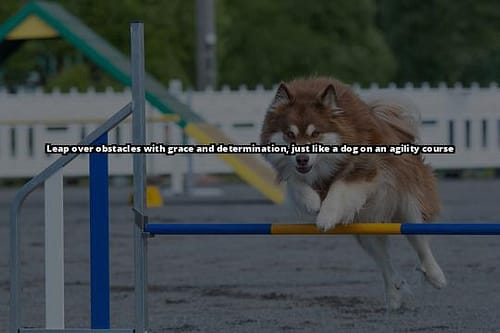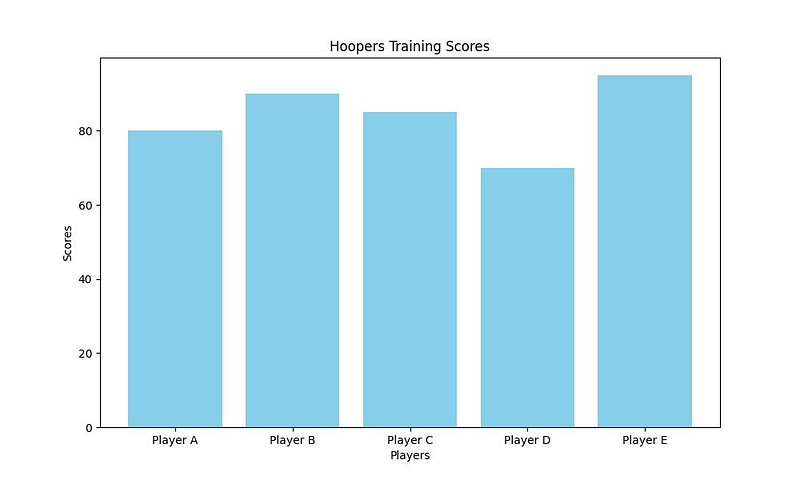Hoopers Dog Training: The Ultimate Guide for Pet Owners
Learn about Hoopers Dog Training
- Definition, principles, and benefits of Hoopers training.
- Differentiating from traditional obedience training.
- Equipment needed and common mistakes to avoid.
When it comes to training our beloved canine companions, Hoopers dog training has emerged as a specialized and effective method that caters to both physical and mental stimulation. In this comprehensive guide, we will delve into the world of Hoopers dog training, exploring its origins, principles, benefits, and how pet owners can embark on this rewarding journey with their furry friends.
Hoopers dog training is not just another trend in the world of dog obedience; it is a tailored approach that focuses on enhancing the bond between dogs and their owners while promoting physical fitness and mental agility. By introducing your dog to the concept of Hoopers training, you are embarking on a fulfilling experience that goes beyond traditional obedience methods.
Understanding Hoopers Dog Training
Definition and Origin of Hoopers Training
Hoopers training originated as a dog sport in the United Kingdom and has gained popularity worldwide for its emphasis on agility, speed, and teamwork between the dog and handler. Unlike traditional agility courses that involve jumps and contact obstacles, Hoopers training revolves around navigating hoops, tunnels, and barrels, making it accessible to dogs of all sizes and physical abilities.
Key Principles and Objectives of Hoopers Training
The primary goal of Hoopers dog training is to create a positive and engaging learning environment for dogs, where they can develop their physical coordination, mental focus, and responsiveness to commands. By incorporating elements of agility and problem-solving, Hoopers training challenges dogs to think on their feet and adapt to different obstacles with confidence and enthusiasm.
Contrasting Hoopers Training with Traditional Obedience Training Methods
While traditional obedience training focuses on commands like sit, stay, and heel, Hoopers training takes a more dynamic approach by encouraging dogs to navigate obstacles independently while responding to cues from their handlers. This interactive and cooperative style of training fosters a strong sense of teamwork between dogs and owners, leading to a deeper level of communication and trust.
Suitability of Hoopers Training for Different Dog Breeds and Personalities
One of the standout features of Hoopers training is its inclusivity towards dogs of all breeds, sizes, and temperaments. Whether you have a high-energy border collie or a laid-back bulldog, Hoopers training can be tailored to suit your dog’s individual needs and abilities. This versatility makes it an ideal choice for pet owners looking to engage their dogs in a fun and fulfilling training routine.

Benefits of Hoopers Dog Training
Physical Benefits for Dogs
Hoopers training offers a range of physical benefits for dogs, including improved muscle tone, enhanced coordination, and increased stamina. The low-impact nature of the obstacles in Hoopers courses makes it suitable for dogs of all ages, providing a safe and enjoyable way to stay active and healthy.
Mental Stimulation and Cognitive Development
In addition to physical fitness, Hoopers training stimulates dogs mentally by challenging their problem-solving skills, spatial awareness, and ability to follow directions. The mental engagement involved in navigating obstacles and responding to cues keeps dogs focused and sharpens their cognitive abilities, leading to a more alert and responsive pet.
Strengthening the Bond Between Dog and Owner
Hoopers training strengthens the bond between dogs and their owners through shared experiences, mutual trust, and effective communication. As dogs learn to rely on their handlers for guidance and support during training sessions, the bond between them deepens, fostering a sense of companionship and teamwork that extends beyond the training field.
Promoting Overall Well-being and Happiness
By engaging dogs in Hoopers training, pet owners not only promote their physical and mental well-being but also contribute to their overall happiness and fulfillment. The positive reinforcement and sense of accomplishment that come with mastering new challenges in Hoopers courses boost dogs’ confidence and self-esteem, leading to a happier and more balanced pet.
| Benefits of Hoopers Dog Training | Step-by-Step Guide to Hoopers Dog Training |
|---|---|
| Improved muscle tone | Basic Commands and Maneuvers |
| Enhanced coordination | Progressing to Advanced Exercises |
| Increased stamina | Incorporating Agility Elements |
| Mental stimulation | |
| Cognitive development | |
| Strengthening bond with owner | |
| Overall well-being and happiness |
Success Story: Transformative Experience with Hoopers Dog Training
Meet Sarah and Max
Sarah, a devoted dog owner, was struggling with finding the right training method for her energetic Australian Shepherd, Max. Traditional obedience training was not engaging enough for Max, and Sarah felt they were stuck in a routine that wasn’t benefitting either of them.
Discovering Hoopers Training
After researching alternative training approaches, Sarah stumbled upon Hoopers dog training. Intrigued by the focus on agility and mental stimulation, she decided to give it a try with Max.
The Transformation
Through consistent Hoopers training sessions that challenged Max both physically and mentally, Sarah noticed a remarkable transformation in his behavior. Max became more focused, responsive to commands, and their bond grew stronger as they conquered agility courses together.
Enhanced Well-being
Not only did Max’s physical agility improve, but Sarah also observed a positive shift in his overall well-being. He seemed happier, more content, and eager to learn new skills during their Hoopers training sessions.
Testimonial
Sarah shared her success story with other dog owners, highlighting the incredible impact of Hoopers training on Max’s behavior and their relationship. She encourages pet owners to explore this specialized training method for a fulfilling experience with their furry companions.

Step-by-Step Guide to Hoopers Dog Training
Embarking on a Hoopers training journey with your dog involves a structured approach that progresses from basic commands to advanced maneuvers. Here’s a step-by-step guide to help you get started:
Basic Commands and Maneuvers
Begin by introducing your dog to basic commands like “hoop,” “tunnel,” and “barrel,” using treats and positive reinforcement to encourage their participation. Practice these commands in a controlled environment before moving on to more challenging exercises.
Progressing to Advanced Exercises
Once your dog is comfortable with the basic commands, gradually introduce more complex maneuvers such as weaving through hoops, navigating tunnels with turns, and circling barrels. Break down each exercise into manageable steps and celebrate your dog’s progress along the way.
Incorporating Agility Elements into Training Sessions
To enhance your dog’s agility and coordination, incorporate agility elements like weave poles, balance boards, and ramps into your Hoopers training routine. These additional challenges not only add variety to the sessions but also help improve your dog’s overall physical fitness and agility.
!
Questions
Who can benefit from hoopers dog training?
Hoopers training is suitable for dogs of all ages and abilities.
What is hoopers dog training all about?
Hoopers training involves dogs navigating through hoops and tunnels.
How can I start hoopers dog training at home?
You can start hoopers training at home with basic equipment like hoops and treats.
Isn’t hoopers training only for certain breeds?
No, hoopers training is suitable for all dog breeds and sizes.
How often should I practice hoopers training?
It’s recommended to practice hoopers training a few times a week for consistency.
Can hoopers training help with behavior issues?
Yes, hoopers training can help improve obedience and focus in dogs.




Leave a Reply